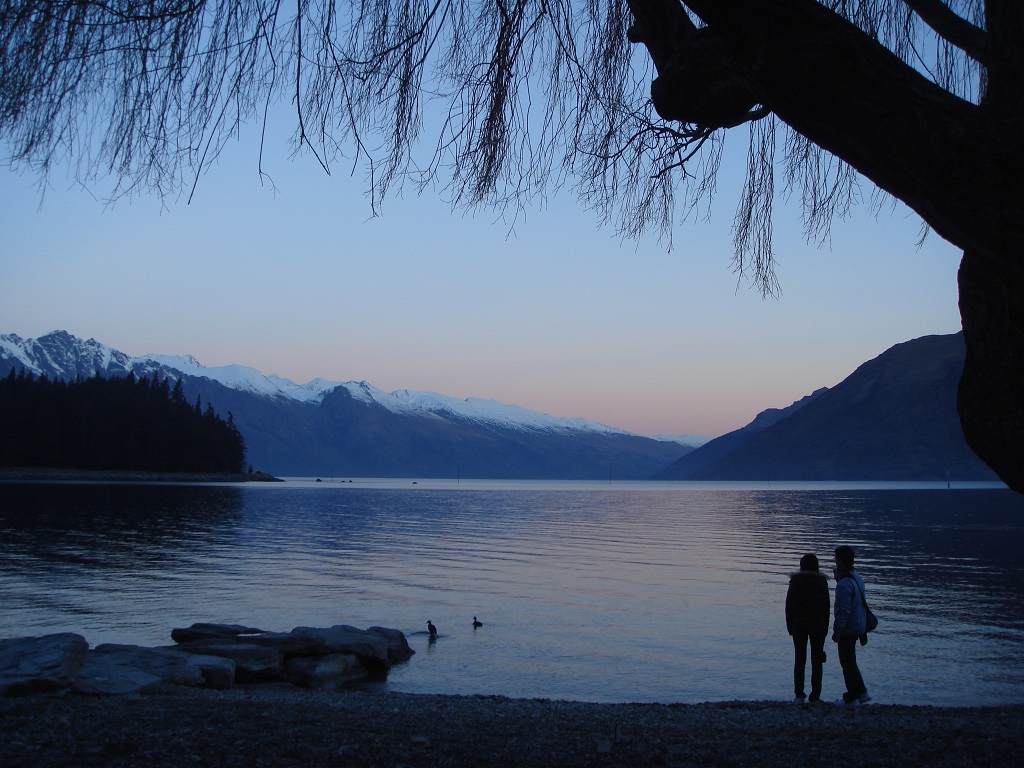16 November 2007
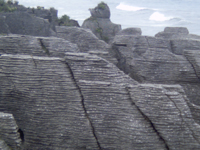 Today
we headed north from Greymouth to see the Pancake Rocks and
Blowholes at Punakaiki. The Pancake Rocks and Blowholes only
occupy a small part of the 30,000 hectare Paparoa
National Park at Dolomite Point. At high-tide, the sea
bursts through a number of vertical blowholes in the highly
eroded limestone.
Today
we headed north from Greymouth to see the Pancake Rocks and
Blowholes at Punakaiki. The Pancake Rocks and Blowholes only
occupy a small part of the 30,000 hectare Paparoa
National Park at Dolomite Point. At high-tide, the sea
bursts through a number of vertical blowholes in the highly
eroded limestone.
Apparently, the pancake rocks formation began over 30 million years ago as dead marine life was deposited on the seabed. Layers of mud and clay were then deposited on the marine life. And so the cycle continued. As the marine life was mainly soft and lime-based the elements have etched away at them to give this unusual, and fascinating, formation.
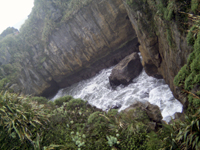 Aside
from the Rocks themselves, one of the more impressive features
of Dolomite Point is "The Splurge Pool" (pictured right.) A
large pool of water at the base of the Splurge Pool surges
and falls back again as the larger waves lash against the exposed
coastline and push water under an arch and into the pool itself.
Aside
from the Rocks themselves, one of the more impressive features
of Dolomite Point is "The Splurge Pool" (pictured right.) A
large pool of water at the base of the Splurge Pool surges
and falls back again as the larger waves lash against the exposed
coastline and push water under an arch and into the pool itself.
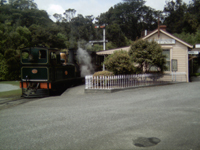 Having
south again, we headed to Shantytown -
a mockup of a village from the 19th Century Gold-rush days
around 10km south of Greymouth. The Chinatown area of Shantytown
tells the story of the Chinese migrants who came to the West
Coast in order to pan for Gold and shows the harsh conditions
in which they lived. Shantytown also plays home to a restored
L508 trainupon which it's possible to take a short ride. You
can also, should you so desire, pan for gold.
Having
south again, we headed to Shantytown -
a mockup of a village from the 19th Century Gold-rush days
around 10km south of Greymouth. The Chinatown area of Shantytown
tells the story of the Chinese migrants who came to the West
Coast in order to pan for Gold and shows the harsh conditions
in which they lived. Shantytown also plays home to a restored
L508 trainupon which it's possible to take a short ride. You
can also, should you so desire, pan for gold.
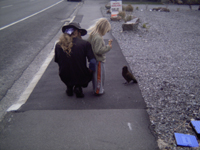 Having
left Shantytown, we headed to Christchurch via Arthurs Pass.
En route, we spotted this Wild Kea on the pavement happily
hopping along behind this little girl who was carrying ice
cream. Apparently, the Kea absolutely love human beings as
they bring along food for them. Their curiosity has led them
to peck at bits of cloting and even the rubber on cars.
Having
left Shantytown, we headed to Christchurch via Arthurs Pass.
En route, we spotted this Wild Kea on the pavement happily
hopping along behind this little girl who was carrying ice
cream. Apparently, the Kea absolutely love human beings as
they bring along food for them. Their curiosity has led them
to peck at bits of cloting and even the rubber on cars.
